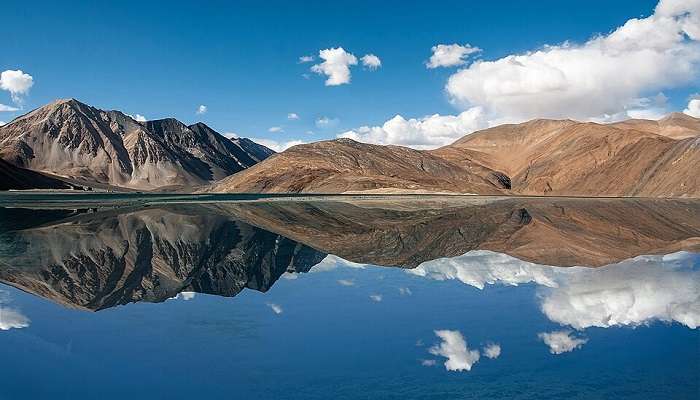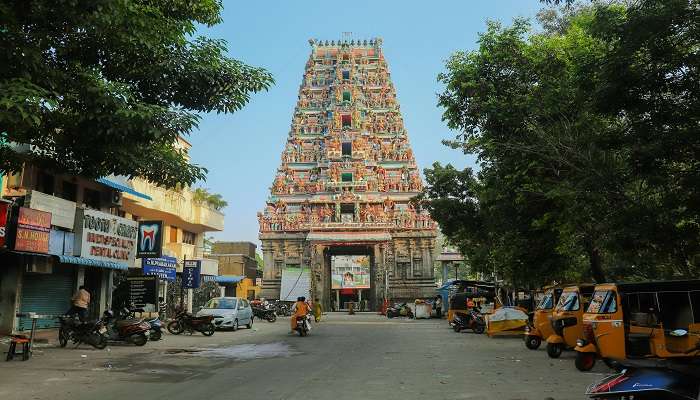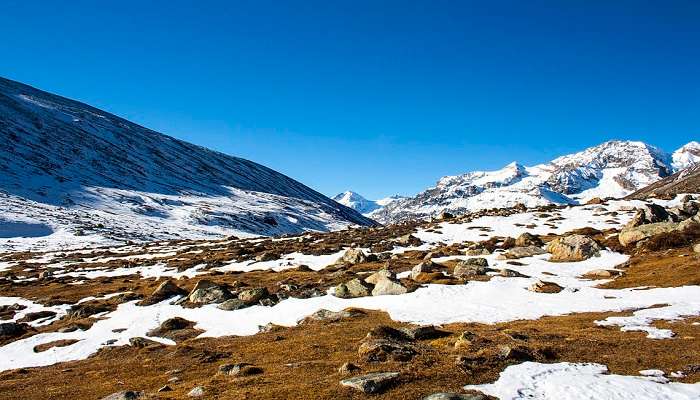Embark On A Spiritual Journey To Kodandarama Temple In 2025
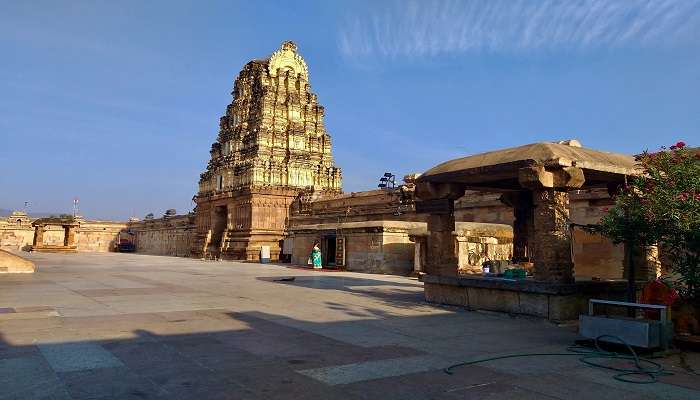
Located in the southeastern region of India, specifically in the state of Andhra Pradesh, the Kodandarama Temple is a true marvel of the architectural history of the Indian subcontinent. This is a Kavadi temple well dedicated to Lord Rama with its lofty building and splendid architecture being a source of worship as well as of historical and art values for devotees and visitors. You should plan your visit to the temple during the right time so that you can explore the beauty of the temple at its best. Well, it is high time that we begin a detailed analysis of this architectural wonder.
History Of Kodandarama Temple
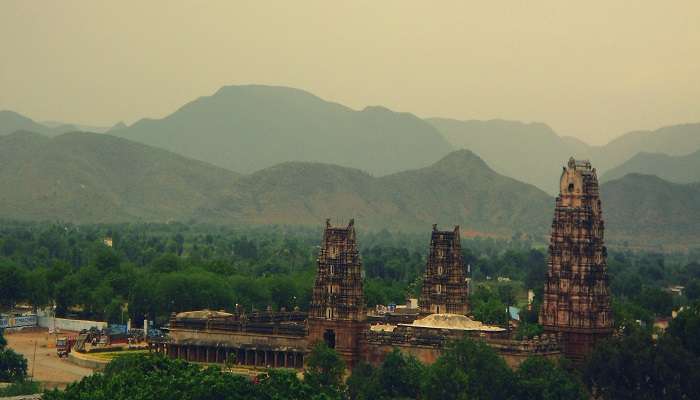
The Kodandarama Temple is situated in Vontimitta town of Kadapa district and it will be useful to describe the temple as the quintessence of the Vijayanagara architectural style. The temple structure itself, with elements already going back to the 16th century, clearly demonstrates the building’s architectural grandeur and the works of skilled architects of the time.
It is noteworthy that the name of the temple itself is Kodandarama, and the meaning is derived from the word ‘Kodanda’, the name given to Lord Rama, signifying bow. This name perfectly reflects the religious and cultural significance associated with this temple where Ram – the Hindu god, undertook a journey depicted in Ramayana.
Also Read: Kailasakona Waterfalls
Architectural Brilliance
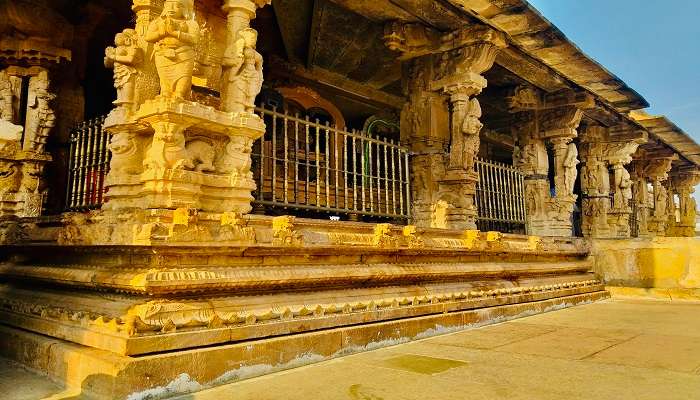
The Kodandarama Temple is phenomenal when it comes to the architectural design angles of the structure. Built on a raised platform with strong walls surrounding it, there are architectural features that are evident in the Dravidian and Vijayanagara architecture.
- The Vimana: The subsequent vessel containing the principal idol is the vimana or the superstructure that towers over the sanctum. It rises like a giant blade, pointing upward towards the sky and is covered in beautiful sculptures showing various mythological stories and deities.
- The Gopuram: The outer structure has a large gateway or ‘gopuram’ over the doorway to the temple and these are typically colorful and carved. It will be seen as the gopuram is viewed as a visual feast with a rich commanding arched gateway, which receives the devotees.
- The Mandapa: The mandapa which is the assembly hall located in the outer place is also large with beautiful pillars and statues.
- The Garbhagriha: Sanctum sanctorum or the Garbhagriha is the principal shrine where the main Deities of Lord Rama, Sita and Lakshmana are worshiped. These are beautifully created images that were hewn out from rocks and are highly esteemed by the believers.
Sculptures: A Story In Stone
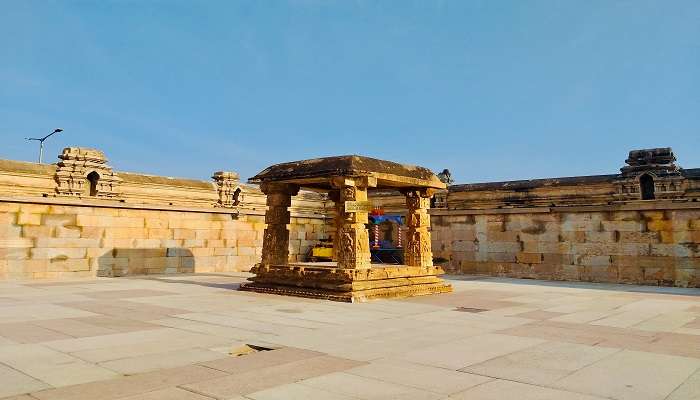
The external architecture of the Kodandarama Temple is as impressive as the internal structure and the walls are filled with many carvings depicting several stories from Hindu mythology. The deities, celestial beings, and mythological creatures seem to be brought to life by the talents of the artisans involved in the creation of these masterpieces.
- The Divine Trio: The temple has several Gopuram and Raja gopurams, the most conspicuous one with large wooden doors and in the sanctum sanctorum are seated idols of Lord Rama, Sita and Lakshmana. These are depicted as calm-looking females with royal gestures, which make them mortals possessing divine qualities.
- Epics in Stone: On the walls and ceilings of the temple, several religious carvings depicting the Ramayana and Mahabharata have been engraved in the form of art pieces.
- Celestial Beauty: It is perhaps for this reason that the temple has many features that depict apsaras, celestial nymphs, and other gods and goddesses in great detail to enhance the temple’s aesthetics.
Related Post: Victory at Sea War Memorial
A Spiritual Experience At Kodandarama Temple
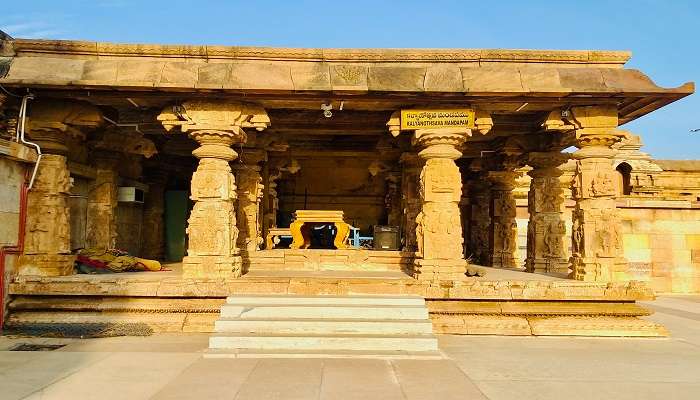
But there is so much more to the Kodandarama Temple than purely the architectural renaissance mastery of technologies; the temple is spiritually rewarding. In the temple, there is no noise or chaos and the persons worshiped are devout and this makes the place spiritual.
- Daily Rituals: See how the priests go about their normal religious activities as well as the performances of religious rituals by them.
- Festival Celebrations: It is recommended to get involved in the events conducted in the temple, which are full of warm culture and traditional celebrations.
- Meditation and Prayer: Relaxation and attainment of personal equilibrium through meditation and prayer in the temple compound.
Surrounding Attractions Of Kodandarama Temple
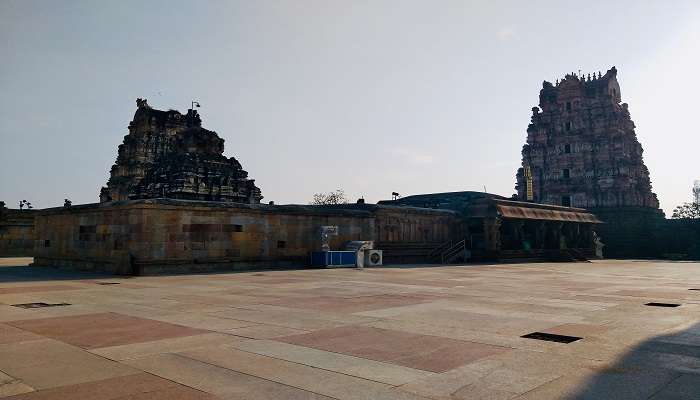
There are other things to do around the Kodandarama Temple too, so it would be wise to spend some more time exploring the surroundings.
- Local Markets: Step into urban sightseeing to capture some of the local markets, which provides an insight into the local culture.
- Natural Beauty: Hike the hills, cross the rivers, and perhaps venture into the forest for a picturesque tour.
- Accommodation: The type of accommodation includes; budget accommodation, moderate accommodation and luxury accommodation.
You May Also Like To Read: ISKCON Temple Rajahmundry
Kodandarama Temple is one of the most beautiful buildings that symbolize the ancient history and culture of India. It’s heaven that is embellished with vivid sculptures and it has a historic touch that makes it an interesting place of the religious center for anyone willing to seek divine and cultural value. Allow yourself to become one with the imposing presence of this temple and unravel the mysteries of Indian art and architecture. Finally take a glance to contain yourself to the architectural beauty of this place, feast your eyes on the marvelous engravings and feel the divine presence around. Expectant of receiving a divine revelation, choose your lodging, prepare for the trip, and go. Plan your trip to Andhra Pradesh today!
For our editorial codes of conduct and copyright disclaimer, please click here.
Cover Image Credit: P. Madhusudan for Wikimedia Commons
Frequently Asked Questions about the Kodandarama Temple
How to reach Kodandarama Temple?
It is based on the location of the temple that one determines which mode of transport to take. Temple premises are usually located along the roads but sometimes they are accompanied by railway stations or even airports.
What are the accommodation options near the temple?
The availability of facilities depends on the area, everything from the beach to mountainous terrains. Food is traditionally served at the restaurants which are usually near the temples; accommodation facilities like hotels, guest houses and Dharamshala for the Hindus.
What to pack for a visit to Kodandarama Temple?
You need to pack some casual and comfortable clothes and shoes, an umbrella or a hat and sunblock lotion. Some of the temples have strict dress codes, therefore, it would be wise to confirm with the temple beforehand.
Is photography allowed inside the temple?
There may be limiting conditions about where one can take a picture in the temple. In many museums photography is strictly prohibited, however, it is recommended to undertake a quick search of the Museum’s policies as a precaution before taking pictures.
Any specific rituals to follow at Kodandarama Temple?
For instance, they must not wear shoes, wear loose clothing, and avoid speaking and other loud activities as much as possible. It is for this reason that specific rituals may differ from one temple to another depending on their traditions. On this note, it is also recommended to emulate the behaviour of other people who are also devotees.
People Also Read:
Shringi Rishi Temple Maha Vishnu Temple Shree Ramnath Temple

Innovative Content Writer Focused on Producing High quality, Original Content that drives traffic and engages readers. Experienced in Content strategy and analytics to measure content performance using tools such as SQL, Power BI, Excel.



